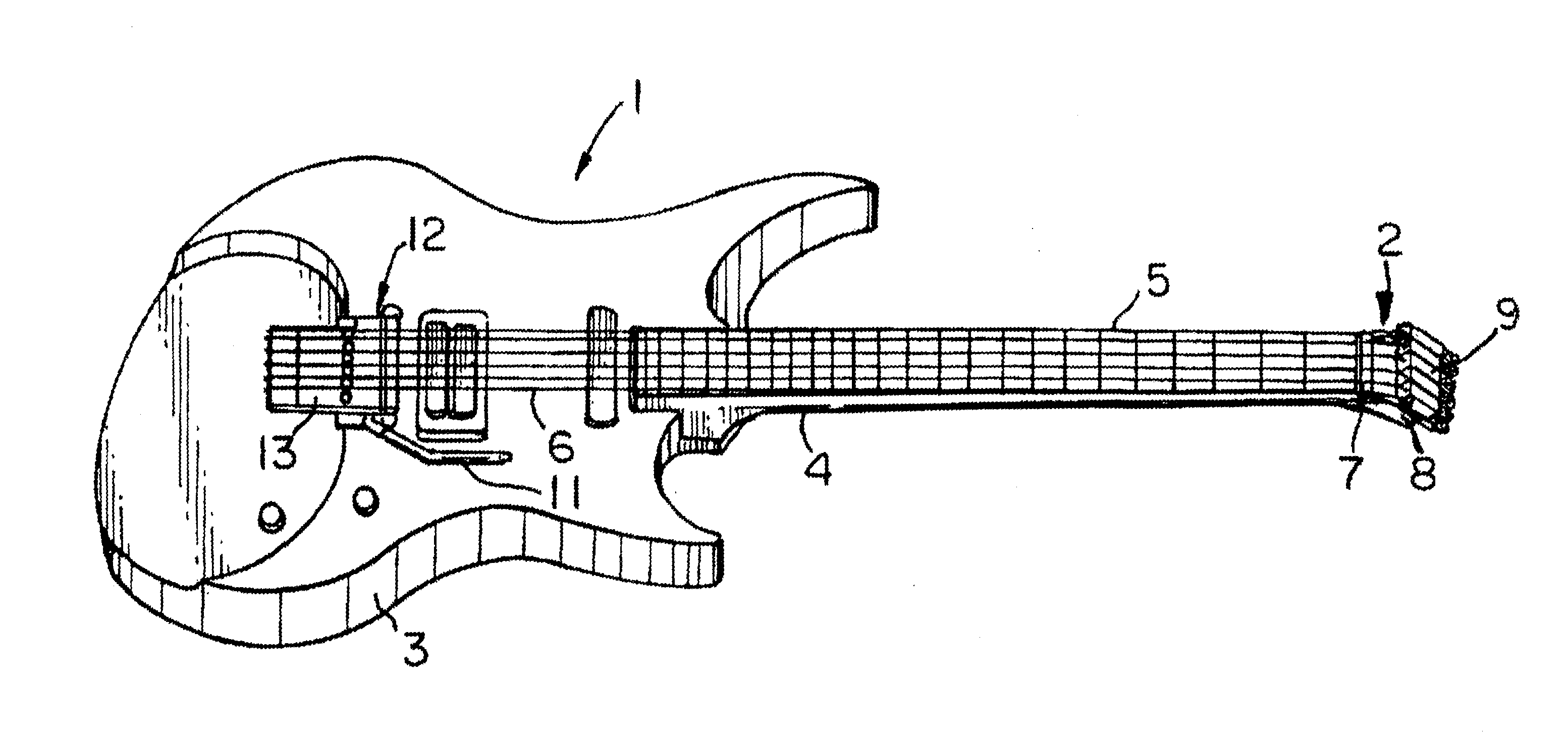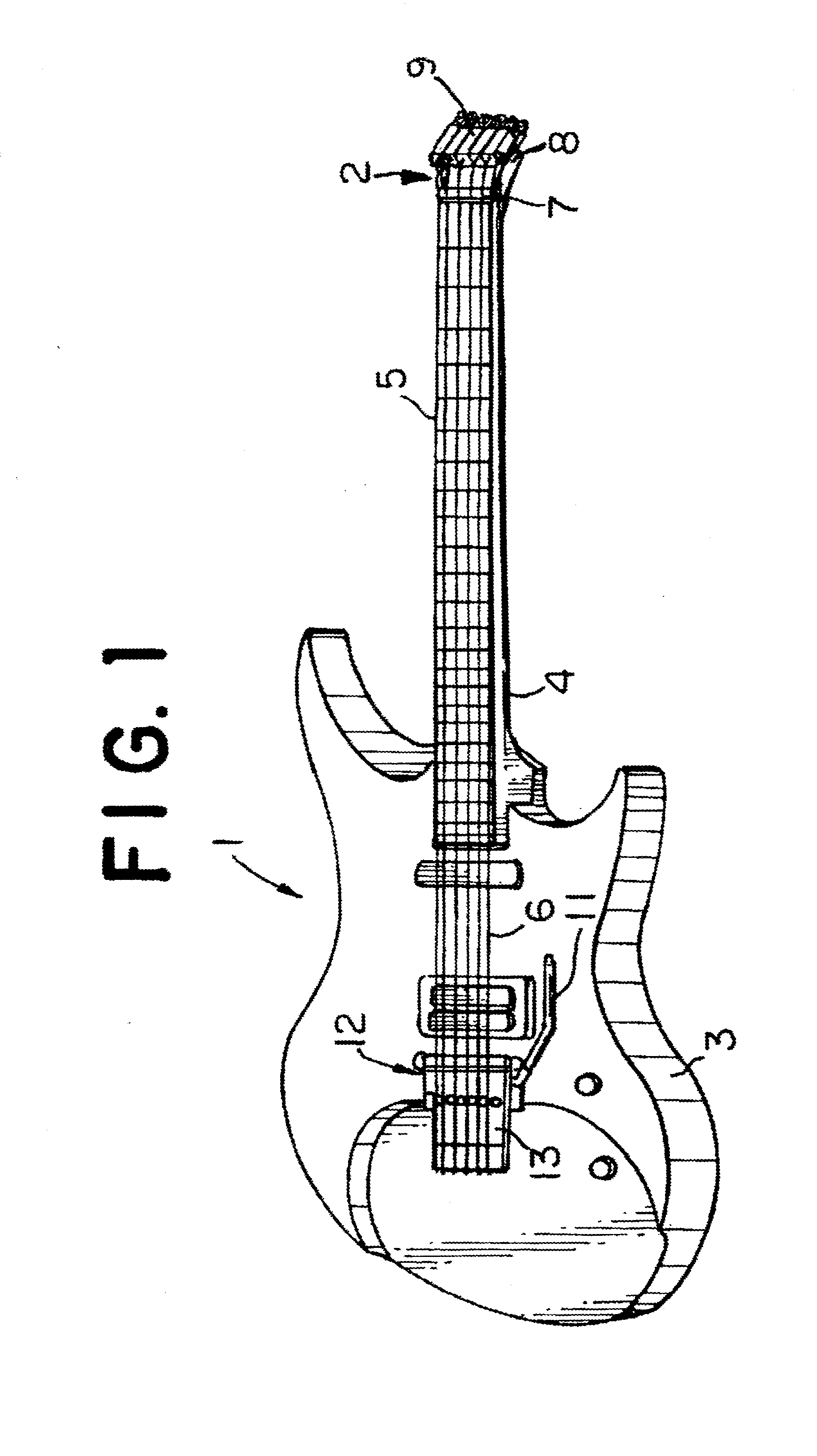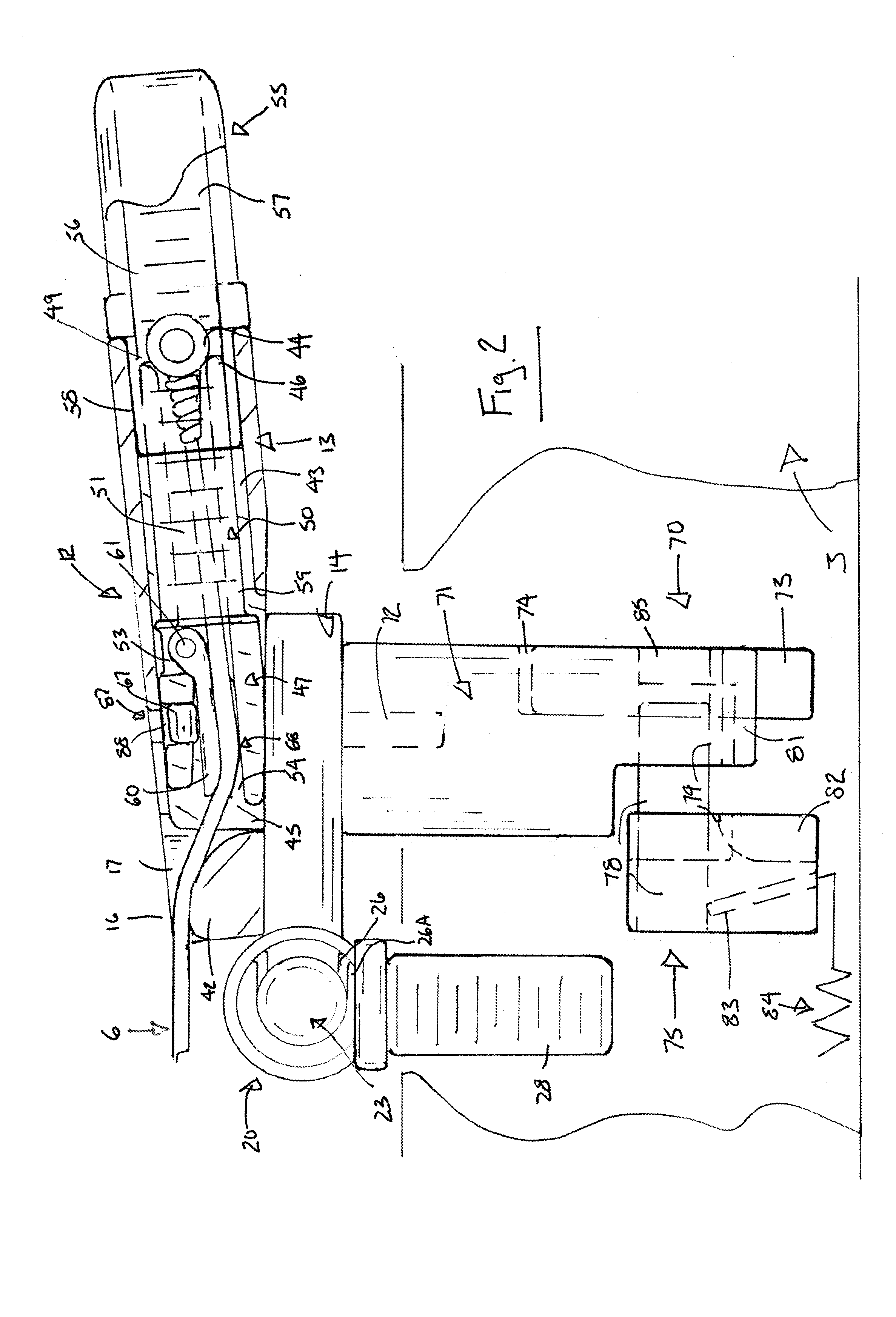Tuning Mechanisms
a technology of tuning mechanism and string, which is applied in the direction of stringed musical instruments, instruments, musical instruments, etc., can solve the problems of inability to accurately tune to the proper playing pitch for any less than the total number of strings, and inability to achieve harmonic tuning for all strings attached to the tremolo, etc., to achieve improved string angle, greater tuning capacity, and ease of use
- Summary
- Abstract
- Description
- Claims
- Application Information
AI Technical Summary
Benefits of technology
Problems solved by technology
Method used
Image
Examples
Embodiment Construction
[0062]In FIG. 1, an electric guitar 1 is illustrated comprising head 2 at one end, a body 3 at the other end, with neck 4 extending between head 2 and body 3. Six of each string 6 extend from head 2 to body 3 over neck 4. Neck 4 forms fret board or fingerboard 5 for guitar 1. At head 2, each string 6 extends over nut 7 forming first critical point 8 for each string 6. Nut 7 is located at the transition of neck 4 to head 2. Each string 6 is secured on head 2 by a corresponding element 9. On body 3, strings 6 are secured to fulcrum tremolo 10. Fulcrum tremolo 10 has arm 11 for pivoting tremolo 10 to provide the vibrato effect on the strings. Fulcrum tremolo 10 has six intonation modules 12, one for each string 6. By manipulating tremolo arm 11, the entire fulcrum tremolo 10, except in the one preferred embodiment of a bearing arrangement as well as riser posts and inserts, can be pivoted about axel 23 forming pivot axis 40 to achieve the desired tremolo effect.
[0063]Intonation module ...
PUM
 Login to View More
Login to View More Abstract
Description
Claims
Application Information
 Login to View More
Login to View More - R&D
- Intellectual Property
- Life Sciences
- Materials
- Tech Scout
- Unparalleled Data Quality
- Higher Quality Content
- 60% Fewer Hallucinations
Browse by: Latest US Patents, China's latest patents, Technical Efficacy Thesaurus, Application Domain, Technology Topic, Popular Technical Reports.
© 2025 PatSnap. All rights reserved.Legal|Privacy policy|Modern Slavery Act Transparency Statement|Sitemap|About US| Contact US: help@patsnap.com



